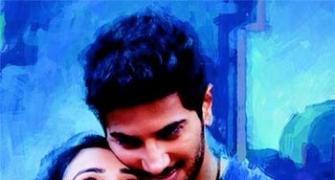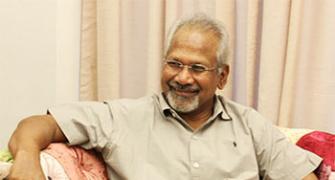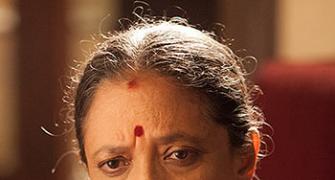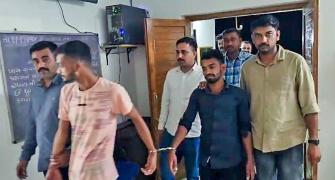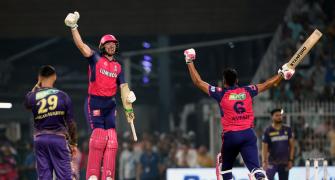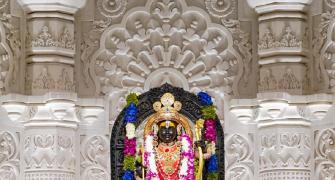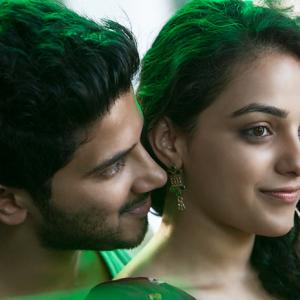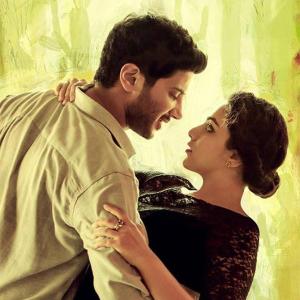'There are too many things that haven't gone out of you. So even though the years may have gone by, you are still close to the films in terms of the making.'
Mani Ratnam, whose Roja, Bombay and Dil Se will be screened in New York this weekend, in conversation with Aseem Chhabra/Rediff.com
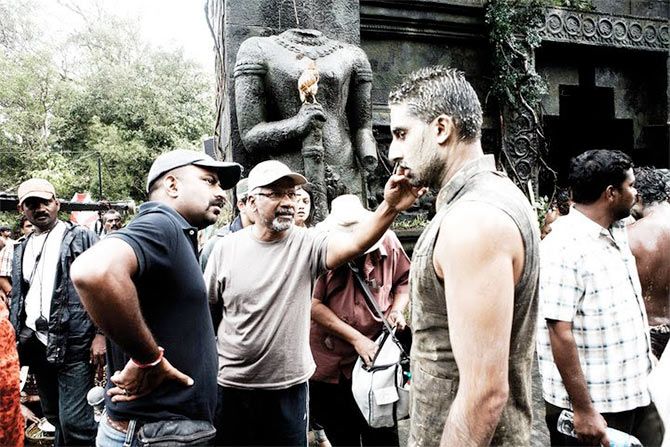
Mani Ratnam is in New York City. His trip via London -- where he presented a master class at the London Indian Film Festival -- coincides with a retrospective of three of his films to be shown this weekend at the Museum of Moving Image in Astoria, Queens.
Politics as Spectacle: The Films of Mani Ratnam features his love in the times of violence and terrorism trilogy -- Roja (1992), Bombay (1995) and Dil Se (1998).
All three films are going to be shown in 35 mm prints provided by Mani Ratnam's film company, Madras Talkies. Following each screening, the director will be interviewed by Richard Pena, a film professor at Columbia University.
On Wednesday, July 29, afternoon, Mani Ratnam was present at the Indian consulate in Manhattan where he spoke to the media about his films.
Aseem Chhabra/Rediff.com spoke to Mani Ratnam about the use of music, songs and politics in his trilogy.
I am curious about what it feels to revisit your films. Have you had many retrospectives like this one?
Yes, but I don't see the films. I have to think about them in my mind and I have to talk about them, remember situations how I made them, what went into making them.
You don't want to see them again?
Seeing them again is difficult. Seeing any film after I have made it is difficult.
Is that with any film? I recently programmed OK Kanmani at the New York Indian Film Festival and it was lovely. You couldn't see it again?
Yes, definitely not. Once the film is released, once my job is over, I can't see the film again.
But why? A lot of filmmakers like to watch their films with the audience.
A lot of people are able to, but some of us are not able to. I have met enough directors who are not able to do. So I am not alone in this. You have been too close to the film and in your mind you will keep correcting it.
So now you will have to think about the times when you originated the ideas, when you started writing the scripts of Roja, Bombay and Dil Se.
The thing is that when you make a film, it is such an intense experience. It's like being married. There are too many things that haven't gone out of you. So even though the years may have gone by, you are still close to the films in terms of the making.
I was also talking about the sense of having the audience watching the film. Roja was made a while back...
In 1992.
They are not watching a new film now. Bringing the films back to the audience, in that sense.
Well, when I see you after Roja, I will know.
I am seeing all three of them. I have seen them before. I am a big fan.
That's wonderful. Then I will know if I have been successful.
I wanted to ask you with an MBA background, how did that Mani Ratnam style of filmmaking evolve, not just in your narrative, but the way you bring the songs in the narrative? And the songs help the narrative to progress.
I think the first thing is that mainstream Indian films have songs.
Yes, but sometimes the filmmakers force the songs and that doesn't work.
I know, but my logic is, if you are going to have songs, then you have to enjoy them. You have to use them to your advantage.
There have been masters and I have liked those masters. I liked Guru Dutt, the way he used songs and the way he shot songs. He was a class apart. I think if you look at Vijay Anand, the way he uses songs.
Guide, for instance.
Yes, Guide, but all his other films also. Sometimes I don't know the films, because I haven't followed all the Hindi films, but sometimes I see the song and I say, 'Oh my god this is beautifully shot. Who did this?' And then you go back and realise it is Vijay Anand or Guru Dutt.
There was a director called Sridhar in the Tamil industry. So there have been masters who have done it very well, who converted the songs into an art form, and put it as a part of the narrative and helped you understand the character or the mood or the story through that.
It has never been a burden. It has always been an uplifting abstract experience.
They made the way for you. They showed you what to do. So after that for you to take on the challenge of the songs is a lot easier.
I am wondering that a song like Tu Hee Re, and I know Bombay was made in Tamil and then dubbed into Hindi, and you worked with your lyricist and A R Rahman, but had you visualised the whole scene? Or was the song ready and then shot it in a quiet seductive way? Or a song like Chayian Chayian, which everyone loves.
I think when the Chayian Chayian song came about, it was conceived as being on top of the train. If you listen to the soundtrack there is the rhythm of the train running through it.
See when you write the script and you are sitting with the music director, and you are working in parallel, it kind of evolves together.
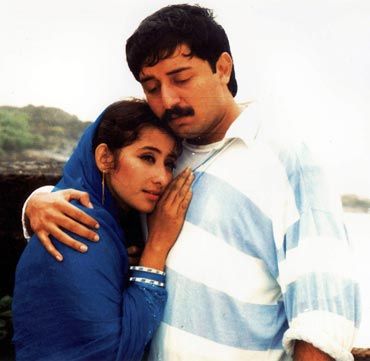 In Tu Hee Re, for instance, the narrative was that in the first 15, 20 minutes of the film the love story should be over and they should have moved to Bombay. It had to be kind of a crunched, intense thing. Actually the emotion in Tu Hee Re is too high for the second reel.
In Tu Hee Re, for instance, the narrative was that in the first 15, 20 minutes of the film the love story should be over and they should have moved to Bombay. It had to be kind of a crunched, intense thing. Actually the emotion in Tu Hee Re is too high for the second reel.
The film had just started. They just had a few exchange of glances.
Yes, they had that one Kehna Hai Kya song and a few conversations and that happens. But we were telling a story at that pace and that song helps the story to move to the next chapter very easily.
The intensity that is there, it adds more to the narrative, it takes away the necessity of six different scenes.
One song does it all.
But had you visualised how it will be shot when the song was given to you?
No, the song was not fully given when we shot the scene. Rahman had still not worked on all the interludes. We had the basic song and the click track along with it. It had a narrative. The basic melody, the lyrics were there and so the song was basically there. But all the interludes had to evolve. We shot it with the flow.
So these songs are a very vital part of your narration.
Yes, they are. As I said if you are going to have them, then enjoy them. It's a gift that Western cinema doesn't have, but we have.
I know some filmmakers use songs just to get masses inside the theatres. But I feel it is a fantastic abstract art form we have, the liberty we have been given, to enhance the narrative, although not necessarily in a logical fashion.
We can take away from it and go into an arc which is emotional, uplifting, which is deeper and has another layer completely.
The lyrics -- imagine poetry coming into your drama. It just lifts it up to have poetry which is adding to what the character is talking in a different context on a much more elevated scale.
I wanted to ask you about the Bombay theme that A R Rahman composed, it is amazing.
I know it is outstanding.
What was your thinking behind that theme? It was for the first time an Indian film had that elaborate theme like composition.
It was conceived as a theme and I remember when he composed it as a tune. It was really a very moving piece. He had composed two pieces actually -- one was for a film my wife (Suhasini Mani Ratnam) directed, which was a lullaby. And then he had composed this for Bombay. He composed them both on the same day.
And then we were shooting Bombay. I wanted him to get the Humma Humma song ready, because that shoot was coming up soon. We came back after the shoot thinking we will have the Humma Humma song that we can listen to and then start planning how to shoot it.
But when we arrived in his studio, he didn't have the song. Instead, he had the theme he had composed and orchestrated. First he didn't do what we had asked him to do for the shoot, he did something else. But what he did was so outstanding that it actually blew my mind.
You do actually have some lyrics at the end of the theme music.
Yes. We added the lyrics. But what he did as a piece was stunning. It was composed as a cry. That was to be the backbone.
If you look at the film, in all of the scenes of violence, the music is playing something else. It is not adding to the violence or the tension. Instead, it is going against the violence.
It is a cry, it is the pain, the agony. That was the idea of the treatment of the film's music and we wanted that in the theme, which would bind it together. It was supposed to be a soothing sound that would take care of the pain.
When you look at these three films that have been tied up together as a trilogy, you can see that there is politics in the background, but your characters are not necessarily political. Manisha Koirala is political in Dil Se. Or perhaps in Roja, Arvind Swamy runs and grabs the flag at the end. You don't give your characters any politics.
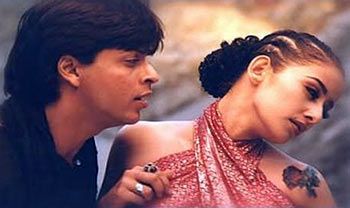 Not really. For instance in Dil Se, Amar is not political, but he is an All India Radio journalist, he is the voice of the ordinary man. That is politically as much relevant that the normal man as he exists goes with a certain politics which he believes in, which makes him think what India is about.
Not really. For instance in Dil Se, Amar is not political, but he is an All India Radio journalist, he is the voice of the ordinary man. That is politically as much relevant that the normal man as he exists goes with a certain politics which he believes in, which makes him think what India is about.
The film was released in the year of the 50th anniversary of India's Independence. There was an air of achievement, air of the sense of real growth. He represented that. It might look on the surface that he is not political, but I think there is an element of it.
As a contrast you have a woman from a smaller town, who has politics deeper inside her, but her politics is personal. So actually I think it is the other way around. I think he is more political, while with her is it more personal.
But your Bombay characters, they have all of this strife happening around them. One is a Hindu and the other a Muslim, but those issues are not important to them.
I think which is happening around us. There are so many Hindus and Muslims who are married in India and it is not an issue with them. The children are born and are growing. But when suddenly something happens somewhere else (the demolition of the Babri Masjid) then suddenly it becomes an issue.
Bombay is really looking at the story from the twins' point of view. They are a product of the union between a Hindu father and a Muslim mother. And they are surrounded by a riot which they have no clue to understand -- why it is happening, what are the riots against?
So it is a cry to look at that generation, a cry of pain.
IMAGES: TOP: Mani Ratnam on the sets of Raavan.
MIDDLE: Arvind Swamy and Manisha Koirala in Mani Ratnam's Bombay.
BOTTOM: Shah Rukh Khan and Manisha Koirala in Mani Ratnam's Dil Se.

